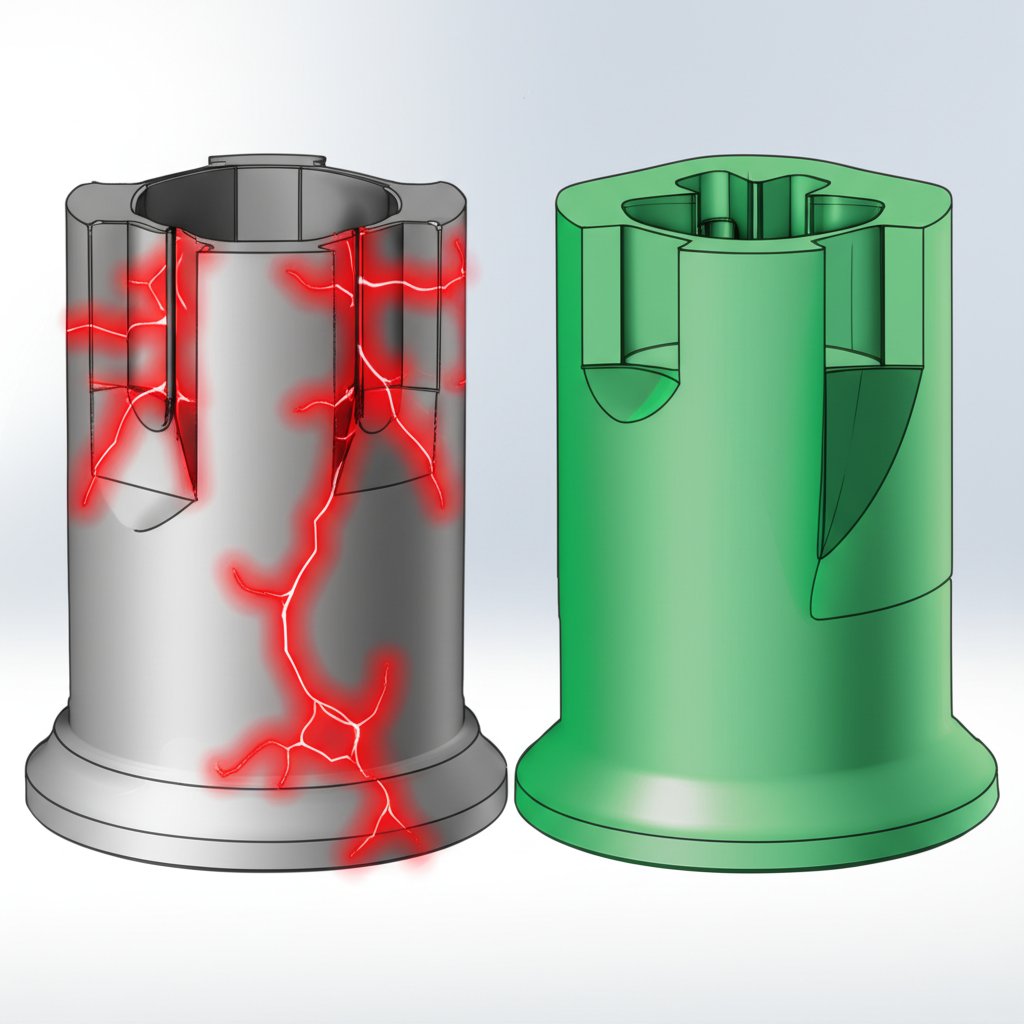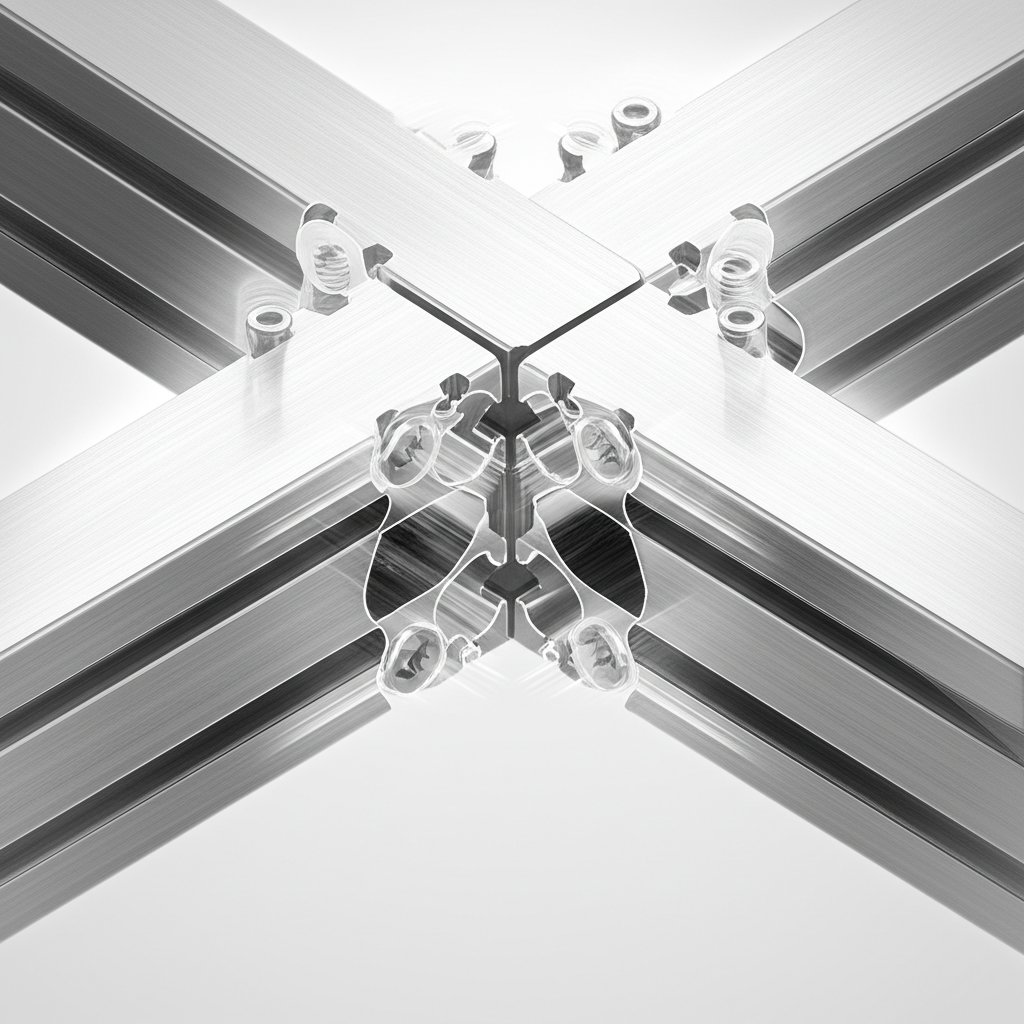Essential Design for Screw Bosses in Extrusions

TL;DR
Designing screw bosses and channels into extrusions creates integrated, reliable fastening points for assembly. Successful design hinges on maintaining uniform wall thickness, using generous radii, and ensuring screw bosses have a 60-degree opening to simplify die construction and reduce costs. Strengthening features like ribs and gussets are critical for enhancing durability and withstanding mechanical stress.
The Role and Importance of Screw Bosses in Extruded Profiles
In the world of aluminum extrusions, screw bosses—often called screw ports or channels—are fundamental features that provide a dedicated, reinforced location for fasteners. Their primary purpose is to allow for the secure joining of separate components or the mounting of additional parts onto an extruded profile. Without properly designed bosses, attempting to drive a screw directly into a thin-walled extrusion would result in a weak connection, as the material would lack the substance to hold torque or bear a significant load. The threads would easily strip, compromising the entire assembly.
The structural importance of these features cannot be overstated. A well-designed screw boss distributes the stress from a fastener across a larger area of the extrusion, preventing localized material failure. This is crucial in applications ranging from architectural frames and industrial machinery to consumer electronics enclosures. As noted in a discussion on LinkedIn, screwing into thin metal is ineffective for holding torque or load. Bosses are precisely placed during the die design phase to create robust, thick-walled cylinders or channels ready to be tapped or used with self-threading screws.
Furthermore, screw bosses are a simple yet sturdy method to facilitate the assembly of complex products. According to Gabrian, a leading supplier, incorporating a screw boss is an effective way to add components to the end of an extrusion. This capability transforms a simple profile into a versatile building block for modular designs, enabling the creation of everything from simple frames to intricate, multi-part systems. Poorly designed bosses, on the other hand, can lead to costly manufacturing challenges, weak joints, and ultimate product failure.
Core Design Principles for Manufacturability and Strength
Creating effective and manufacturable screw bosses requires adherence to several core design principles that balance structural integrity with the realities of the extrusion process. These rules ensure that the metal flows smoothly through the die, resulting in a dimensionally accurate and strong profile. A foundational principle is maintaining uniform wall thickness whenever possible. As highlighted in a DFM design guide from Yaji Aluminum, significant variations in wall thickness can cause the metal to flow at different speeds, leading to distortion, surface defects, and internal voids.
One of the most critical and specific guidelines concerns the geometry of the boss itself. According to Taber Extrusions, a key tip is to design screw bosses with a 60-degree opening. If the channel is too narrow or enclosed, it requires a complex and costly die component known as a 'torpedo' (part of a mandrel in a hollow die) to form the internal feature. This not only increases the initial tooling cost but also reduces the operational life of the die. Adhering to this 60-degree rule classifies the feature as part of a solid profile, which is simpler and more economical to produce.
Beyond these primary rules, several other best practices contribute to a robust design. Smooth, gradual transitions between the boss and the main profile walls are essential. Sharp corners create stress concentrations and can impede metal flow, leading to defects.
- Wall Thickness: The wall surrounding the screw boss must be thick enough to support the required thread engagement and withstand tightening torque. The thickness should be as uniform as possible with the adjacent walls.
- Corner Radii: Use generous radii where the boss meets the rest of the profile. This helps prevent cracking and improves the flow of aluminum during extrusion.
- Smooth Blending: Ensure the boss blends smoothly into the surrounding geometry. Abrupt changes can create weak points and surface imperfections.
- Material Selection: Choose an appropriate aluminum alloy, such as from the 6xxx series (like 6061 or 6063), which offers a good balance of extrudability, strength, and corrosion resistance.
By integrating these principles early in the design phase, engineers can create profiles that are not only functional and strong but also optimized for efficient and cost-effective manufacturing.

Advanced Techniques: Strengthening Bosses with Ribs and Gussets
While adhering to core design principles creates a functional screw boss, many applications demand additional reinforcement to withstand high mechanical stress, vibration, or impact. Advanced techniques involving ribs and gussets are employed to bolster the strength of screw bosses without adding excessive mass or creating thick sections that disrupt the extrusion process. These features act as structural supports, effectively distributing loads from the fastener into the main body of the profile.
Ribs are thin, wall-like extensions that connect the screw boss to other nearby walls of the extrusion. By tying the boss to the surrounding structure, ribs prevent it from flexing or breaking away under load. For optimal performance, ribs should be designed with a thickness similar to the main profile walls to maintain balanced metal flow. Placing multiple, thinner ribs is often more effective than a single, thick one. This approach increases stiffness and stability while minimizing the risk of creating a hot spot during extrusion that could lead to sinks or other surface defects.
Gussets serve a similar purpose but are typically triangular supports placed at the base of a boss where it joins a perpendicular wall. They provide powerful reinforcement against forces that could bend or shear the boss off the profile. Like ribs, gussets should blend into the boss and wall with generous radii to avoid sharp internal corners that create stress concentrations. For applications that require even greater strength, a counterbore can be designed into the top of the boss. A counterbore is a cylindrical flat-bottomed hole that enlarges the screw opening, allowing the head of the fastener to sit flush with or below the surface. This feature also provides a thicker section of material right at the point of fastening, further enhancing the boss's ability to resist stripping and tensile loads.

Application: Integrating Screw Channels for Joining and Assembly
The true value of well-designed screw bosses and channels is realized during assembly. These features are the linchpins that allow individual extruded profiles to be connected into complex, functional structures. A common question from those new to the material is, 'Can you screw into extruded aluminum?' The answer is a definitive yes, and screw bosses are the professional method for doing so. They provide the necessary material depth and strength for reliable, repeatable fastening, which is essential for creating everything from machine frames and enclosures to window systems and modular furniture.
Consider the practical example of constructing a 90-degree corner joint for a rectangular frame. Two extrusions can be designed with screw channels running parallel to their length. To join them, one profile is cut to length, and holes are drilled through its side wall to intersect the screw channel of the mating profile. Screws are then driven through these holes and into the channel, pulling the two pieces together into a tight, strong corner. This method is far superior to attempting to tap into a thin end wall, providing a connection that can withstand significant torque and structural loads.
In more advanced applications, these integrated features streamline manufacturing and reduce assembly time. For projects demanding high precision and certified quality, such as in the automotive sector, the design of these features is critical. For automotive projects demanding precision-engineered components, consider custom aluminum extrusions from a trusted partner. Shaoyi Metal Technology offers a comprehensive one-stop service, from rapid prototyping to full-scale production under a strict IATF 16949 certified quality system, ensuring components meet the highest standards. The ability to design complex, multi-functional profiles with integrated fastening points reduces the need for secondary machining operations and simplifies the final assembly process, ultimately lowering costs and improving product quality.
Frequently Asked Questions
1. How to design a screw extruder?
This question often causes confusion. Designing a screw boss *into an extrusion* is about creating a feature in a metal profile for fastening. Designing a *screw extruder* refers to engineering the entire machine used in processes like plastic or food manufacturing. That machine's core component is a large, rotating screw that conveys, melts, and pressurizes material. Its design involves complex principles of thermodynamics, fluid dynamics, and material science, focusing on elements like pitch, channel depth, and compression ratios, as detailed in resources like this guide from NC State University.
2. Can you screw into extruded aluminum?
Yes, you can absolutely screw into extruded aluminum, and it is a very common assembly method. For the strongest and most reliable connection, it is best practice to drive screws into specially designed features like screw bosses or channels. These areas are designed with thicker walls to provide sufficient material for threads to grip securely, whether they are pre-tapped or used with self-tapping screws. This prevents the stripping and weakness that would occur if fastening into a standard thin wall.
3. What are the 5 steps of extrusion?
While the specifics can vary by material (e.g., aluminum vs. plastic), the general extrusion process follows five main stages. First, a heated billet of material (like aluminum) is prepared. Second, the billet is loaded into the extruder press and forced against a die. Third, immense pressure is applied, pushing the material through the die's opening, which shapes it into the desired profile. Fourth, the newly formed extrusion is cooled or quenched in a controlled manner. Finally, the long profile is stretched to relieve internal stresses and then cut to the required lengths.
 Small batches, high standards. Our rapid prototyping service makes validation faster and easier —
Small batches, high standards. Our rapid prototyping service makes validation faster and easier — 
